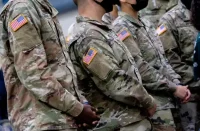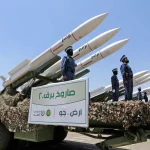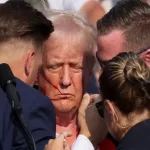US Department of State spokeswoman Victoria Nuland announced on November 22 that the US stops supplying to Russia the data on conventional arms in Europe. Furthermore, Russian inspectors would not be admitted to US military bases in Europe. What could be the reasoning behind the radical US step which, it must be noted, fits with a wider trend in Washington’s decision-making?
First, the Treaty on Conventional Armed Forces in Europe (CFE), which was pompously penned in 1990 and imposed constraints on the deployment of non-nuclear arms on the continent, was supposed to be a deal between two blocs – NATO and the Warsaw Pact.
Secondly, its underlying compromise was political rather than military in nature as naval weapons, cruise missiles, air defense, etc. remained outside of the CFE Treaty’s scope.
Thirdly, the world’s configuration changed since the time the CFE Treaty was formulated, with new independent states coming into being and some of the former Eastern bloc countries joining NATO. Automatically, the Treaty’s provisions did not account for their existence.
An amended version of the CFE Treaty signed in Istanbul in 1999 similarly reflected a compromise of a political character. It grew out of negotiations which, even though champaign was occasionally served in the process, dragged on with great difficulty. On top of that, the subsequent ratification took ages – the refreshed CFE treaty was ratified by Russia only in 2004, with Belarus, Kazakhstan, and Ukraine following the lead shortly. NATO countries showed even less enthusiasm to ratify it. Russia eventually suspended the CFE Treaty in 2007.
As it follows from the above, this November Washington scrapped a de facto meaningless agreement. Back in 2007, Russia’s foreign ministry bluntly confirmed that the CFE Treaty was dead when it released a comment explaining that the agreement signed in the Cold War era was long out of sync with the realities of the transformed Europe and could not contribute to the international security. Gen. Yu. Baluyevsky who was the Russian army’s chief of general staff at the time even charged NATO with exceeding the ceilings set by the Treaty by thousands of units.
Mrs. Nuland of the US Department of State did say that the doors were open for further talks, but the remark read as a mere tribute to the norms of diplomatic politeness. If, as US officials assert, Washington is interested in reanimating the Treaty or attracting Moscow to new negotiations over its subject, the natural first step for the US would be to take the locks off the doors. For example, NATO could express readiness to keep sticking to the Treaty quotas, to account for the Baltic republics’ military potentials in the overall balance, etc. It is clear, though, that the US is not going to do anything of the kind, as otherwise it would have to pull some of its forces – tanks, armored vehicles, canons, and copters – out of Europe and thus weaken its grip on the continent.
Moscow responded to Washington’s move within hours: President Medvedev made a statement pertinent to the key element of the reset policy framework – namely, the recent New START Treaty. Upon mentioning that the treaty confirmed the linkage between the offensive and defensive strategic armaments and allowed Russia to withdraw from it under appropriate conditions, the Russian leader made it clear that Russia “reserves the right to discontinue further disarmament and arms control measures”. The statement could impress the media but not the Pentagon where, no doubt, the present-day modest capabilities of the Russian army and military-industrial complex are assessed with full realism.
Washington’s heavily advertised reset in the relations with Moscow ended with a fabulous failure, and no other outcome could be realistically expected from the outset. The reason is that over roughly the last 150 years the US was building a vision of the world such that Russia – Soviet, post-Soviet or sustaining any other social and political system – was a priori regarded as an enemy. From A. Mahan to Z. Brzezinski, US geostrategies were centered around crushing Russia as a prologue to the US global primacy. A couple of illustrative examples are given below.
A. Mahan wrote that the US should gain control over the entire part of South Asia stretching from the 30 to the 40 parallel and start pushing the Russian nation to the north. His plan was that – as, by the laws of nature, the termination of growth necessarily leads to decline – the Russians would be doomed if locked up in their northern territories. Z. Brzezinski, in his turn, coined the thesis that the new world order would be built on the wreckage of Russia, at the expense of Russia, and would be used against Russia.
It is not surprising, therefore, that US President W. Wilson suggested partitioning Russia in 1918 or that US President R. Reagan used to condemn the Soviet Union as the “evil empire”.
A credible reset in the US-Russian relations would take a reset in the minds of the US politicians and financial players who would have to embrace a completely new geopolitical vision and delete irreversibly their absurd dream of world dominance…
________________________________
Leonid IVASHOV is a vice president of the Russian Academy on Geopolitical Affairs and former Joint Chief of Staff of the Russian Armed Forces, General-Colonel (rtd).
Source: Strategic Culture Foundation














Well, no offense, but when your Chief of Staff starts talking a certain way, people wonder what’s up over there.
Because of nuclear weapons, there is no more important relationship in the international system than that between America and Russia.
Such a Sea state as America, versus a Landstate like Russia, will have some differences, although neither side has to be a pure rival, since there exist some other rather powerful actors in the international system, like China, Germany, and Japan for starters, who might have their power increased if something bad happened between America and Russia, if of course there wasn’t a lot of fallout. Get it?
But pure enemies is not the case. Putin is going to win that election no matter what the West does, which means it won’t do much, because it can’t do much, thanks to you know who. If that’s what this is all about, people should lighten up, as we’ll all live a lot longer, and, if not happily ever after, America isn’t trying to crush Russia, since that wouldn’t go well as to increasing Chinese power, or Indian power, assuming a lot of nukes don’t go off in that process, not likely in the limit, which is why America and Russia are stuck with each other.
No one doubts that the Russian-US relations are a cornerstone of the international stability. But strategically we can’t swim in the same boat.
First, the US as a state is already inferior to the supranational elites residing on its territory. The United States does not comply with the functions of a sovereign state. The Wiki scandal has shown that American state is not a serious, trustworthy partner. State Department and other US institutions are subject to the dictate of global financial elites and netocracy.
Second, the strategic goal of supranational elites is global dominance. They still have few rivals: Russia, China, Iran, to some extent Germany and several smaller countries. Russia is a key for their success because of the abundant natural and quality human resources and nuclear might. So the tactical plan of the global elites is to try to tempt the Russian elites with enormous wealth, make them believe that they can be treated as equals in a ‘New Jerusalem’ and then to set Russia and China against each other like they did on the eve of WWI & WWII with regard to Russia/Germany.
You decide whether the Russian leadership believes in this baloney or just plays up to this Great Game until one of the players gets totally mixed up.
I’m surprised it took this long for anything to happen. Relations between the US and Russia are now at an all time low. This is probably due to America’s focus on the Middle east and Russia’s opposition to everything the American do in the middle east due to their alliances with Iran and China.
Andrew, I guess the lowest point was after the 08.08.08 Georgian war in South Ossetia. Today the presidential campaigns in Russia and the US affect rhetoric, but nothing serious happens.